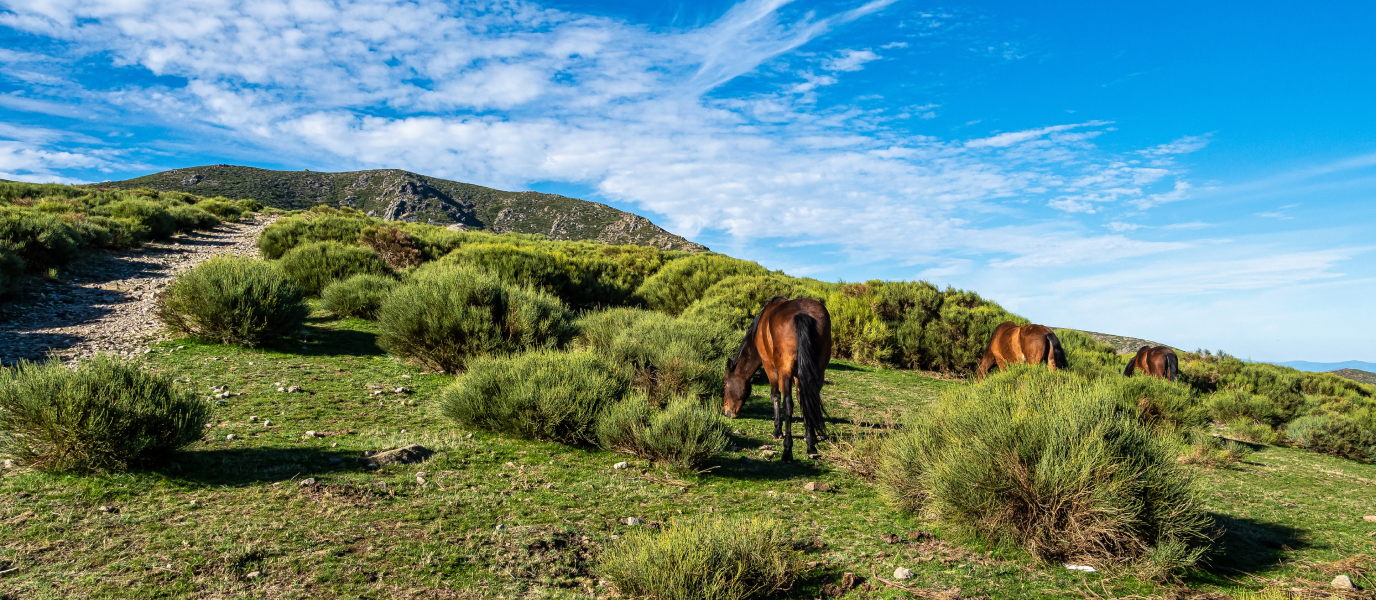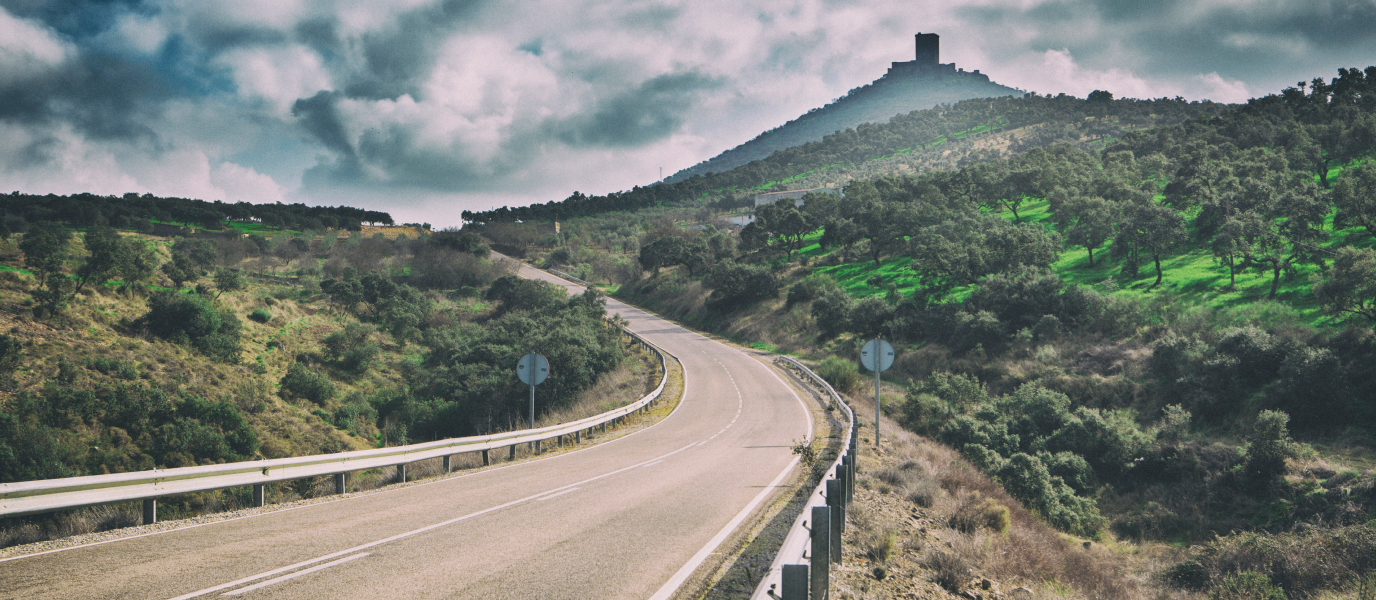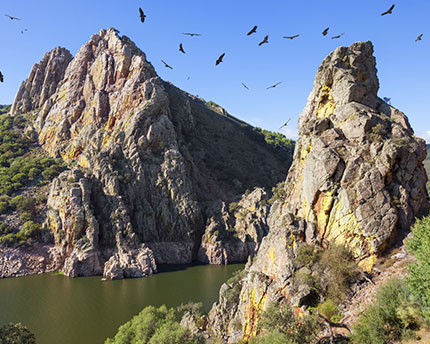The area of Las Hurdes is not famous for striking monuments or thriving cities, but rather the quiet charm of its quaint villages and remote countryside. For several decades, this region, located at the northern end of Cáceres, was seen as one of neglected towns and villages. Fortunately, Las Hurdes has gone through significant changes in recent times…
Driving through Las Hurdes, the memory of poverty is still traceable in its landscape, but it is clear that a great deal has changed since the 1920s, when the highly esteemed filmmaker Luis Buñuel lived here.
It was precisely this Aragonese director who put Las Hurdes on the map with his film ‘Las Hurdes: Land without bread’, which described a land of misery: villages neglected by the government and stuck in rural poverty.
Now, however, Las Hurdes is every bit as developed as other parts of Cáceres and the rest of Extremadura in terms of infrastructure, public investments and future possibilities.
In addition, Las Hurdes boasts stunning natural landscapes, including the famous Melero Meander, one of the most spectacular meanders in the whole country. Also, the unique culture of Las Hurdes, including its folklore and cuisine, represents a genuine patrimonial treasure.
Explore the Las Hurdes region in Cáceres
Las Hurdes is located on the border between the province of Cáceres and that of Salamanca (Castile and León), on the south side of the Central System mountain range. Five rivers (Ladrillar, Los Angeles, Hurdano, Malvedillo, Ovejuela and Esperabán), born in its heights, descend into Las Hurdes, creating fertile valleys filled with fruit trees and vegetables in their wake.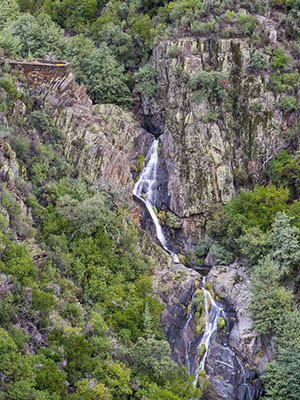
In terms of orography and landscape, Las Hurdes is similar to the nearby valleys of Jerte and La Vera.
Agriculture and animal husbandry (especially beekeeping) are the main sources of income in the area, although in the recent decades, tourism has come to represent an interesting alternative form of livelihood. Indeed, during bank holidays, weekends and the holiday season, growing numbers of visitors flock to Las Hurdes, enticed by its beautiful remote landscapes.
The population of Las Hurdes is just above 7,200 and it spreads out over an area of about 500 square kilometres, distributed between six municipalities, which in turn are divided into a total of 43 localities (villages, alquerías, and districts). Nuñomoral and Pinofranqueado have the highest number of inhabitants.
The beautiful villages of Las Hurdes
There are many interesting things to see in the 43 localities of Las Hurdes. Virtually all local villages and alquería farms have been built using the characteristic black slate of the region, the central feature of so-called black architecture. Read on to find out about the most interesting villages in the region:
- Horcajo: Located at the meeting point of a mountain stream and the river that gave its name to this alquería, Horcajo is famous for its black architecture and beautiful surrounding landscape. It belongs to the municipality of Pinofranqueado.
- El Gasco: Although most people go to El Gasco to marvel at, and swim in, Chorro de La Meancera, described later on in the text, this village also represents a true archaeological gem, as the remains of an ancient settlement from the Bronze Age were found here.
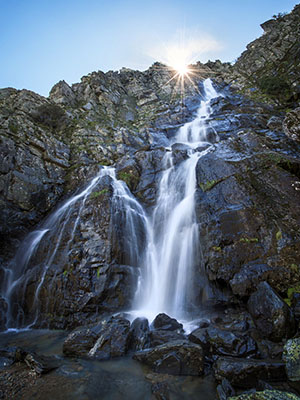
El Gasco en Las Hurdes - El Robledo: This alquería belongs to the municipality of Casares and it is the highest locality in Las Hurdes (1,100 metres). Several houses in El Robledo are representative of the peculiar black architecture that the region is famous for.
- Casares de Las Hurdes: The largest village in the municipality of the same name and well-known throughout the region for its tamborileros, drummers, who get together during the annual carnival and give life to one of the province’s most remarkable celebrations.
- Casar de Palomero: This village hosts three medieval neighbourhoods (Christian, Moorish and Jewish), a rarity not only in Extremadura, but throughout the entire country. Don’t miss the Ermita de la Cruz Bendita (18th century), a beautiful hermitage in Calle Mayor.
What to see in Las Hurdes
In addition to its fascinating local culture and traditional architecture, Las Hurdes is surrounded by spectacular natural environments. Read on to find out which places are the most popular amongst tourists:
- Meandro del Melero: With the almost perfect circle formed by the Alagón river, the Melero Meander undoubtedly represents one of the most spectacular natural landscapes in the entire country. Although the meander is actually located in the province of Salamanca, you get the best view from Mirador La Antigua, a viewpoint in Las Hurdes.
- Charco de La Olla: Located in Las Mestas and fed by the Ladrillar river, Charco de la Olla is the largest natural swimming pool in Las Hurdes. Next to it there is an old water mill made entirely of stone.
- Meandros del Malvedillo: The best place to admire the numerous bends of this spectacular river is Mirador de El Gasco. The river includes three meanders spread out over a relatively small space.
- Chorro de la Meancera: This 100-metre-high waterfall is also referred to as Chorro de la Miacera. For the best view, start from the El Gasco village, where you should find a signposted paved path about two kilometres long. The best time to visit is the spring.
- Embalse de Pinofranqueado: Located in the heart of a magnificent wooded area, this dam retains the water from the Los Ángeles river and supplies five local villages with drinking water. Exploring the area around Embalse de Pinofranqueado at the end of the spring or beginning of the summer is truly delightful.

























































